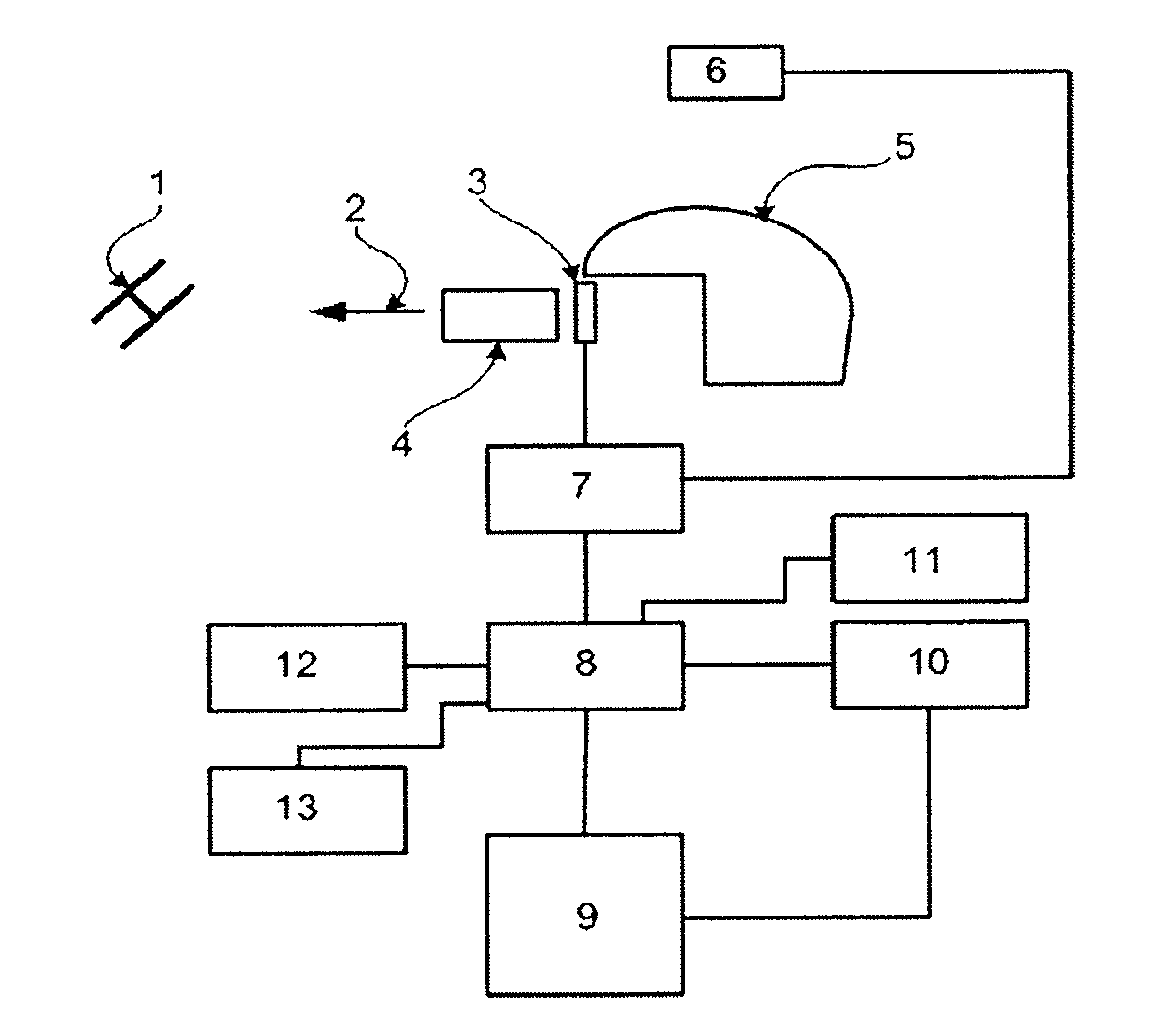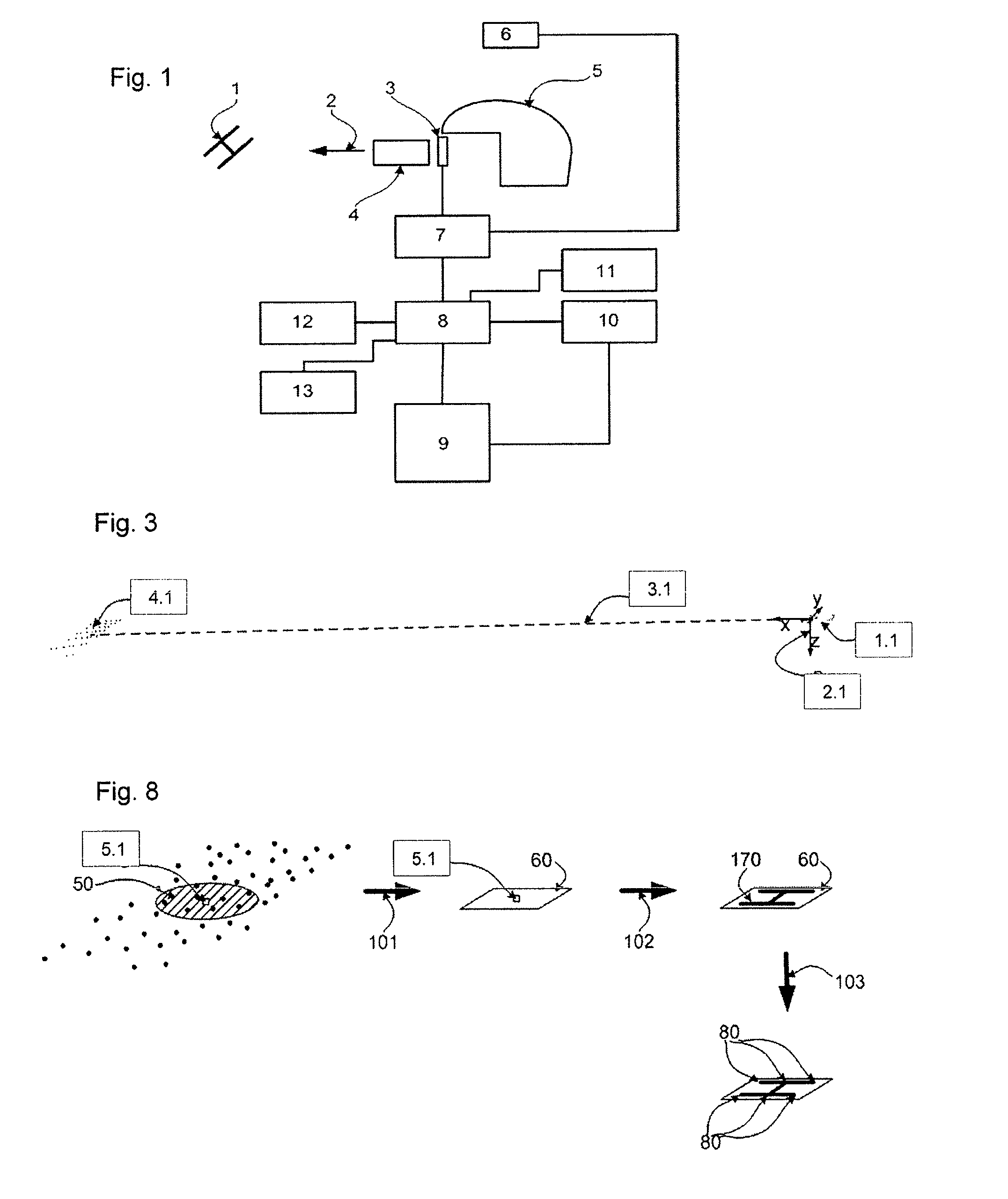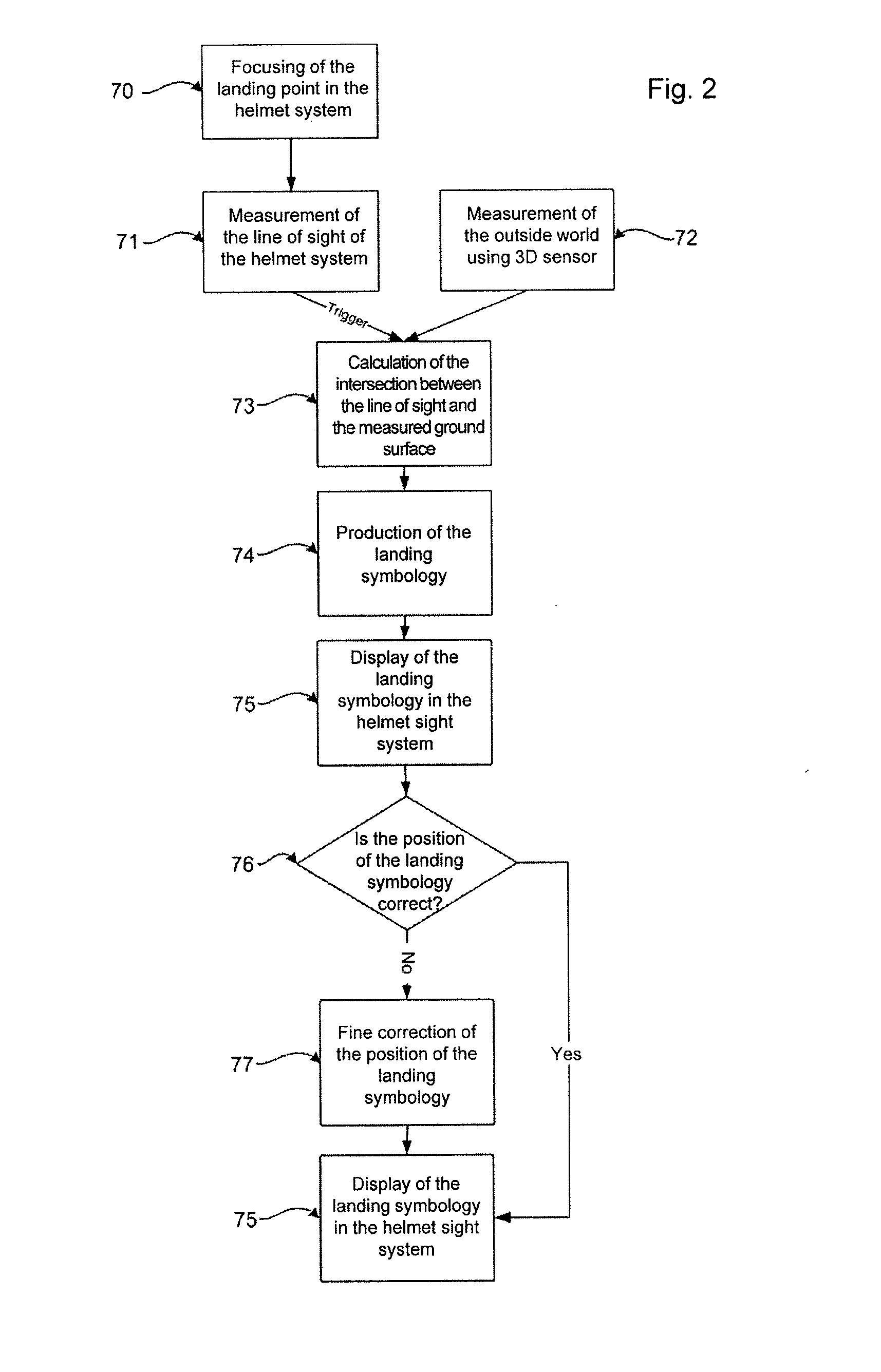Method for pilot assistance for the landing of an aircraft in restricted visibility
- Summary
- Abstract
- Description
- Claims
- Application Information
AI Technical Summary
Benefits of technology
Problems solved by technology
Method used
Image
Examples
Embodiment Construction
[0016]Embodiments of the present invention provide a method for pilot assistance in particular for the above-described brownout and whiteout scenarios, in which landing area zymology is displayed with high accuracy and using an up-to-date database.
[0017]Accordingly, embodiments can be directed to a method for pilot assistance for the landing of an aircraft in restricted visibility, with the position of the landing point being defined by a motion-compensated, aircraft-based helmet sight system during the landing approach, and with the landing point being displayed on a ground surface in the helmet sight system by the production of symbols which conform with the outside view. The method includes that the production or calculation of the ground surface is based on measurement data, produced during the approach, from an aircraft-based 3D sensor, and both the production of the 3D measurement data of the ground surface and the definition of the landing point are provided with reference to...
PUM
 Login to View More
Login to View More Abstract
Description
Claims
Application Information
 Login to View More
Login to View More - R&D
- Intellectual Property
- Life Sciences
- Materials
- Tech Scout
- Unparalleled Data Quality
- Higher Quality Content
- 60% Fewer Hallucinations
Browse by: Latest US Patents, China's latest patents, Technical Efficacy Thesaurus, Application Domain, Technology Topic, Popular Technical Reports.
© 2025 PatSnap. All rights reserved.Legal|Privacy policy|Modern Slavery Act Transparency Statement|Sitemap|About US| Contact US: help@patsnap.com



